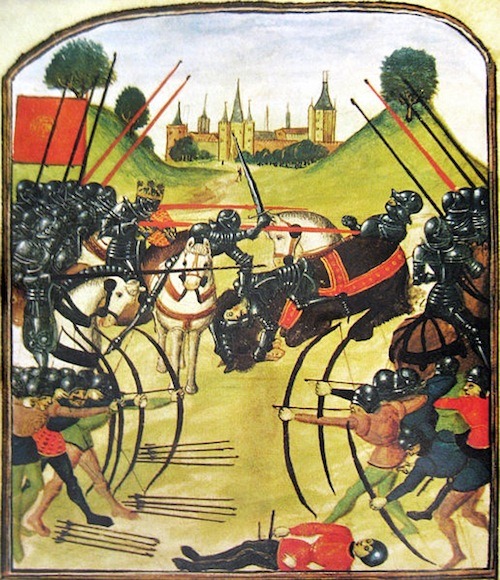On this day in history, 4th of May 1471, battle of Tewkesbury took place, which was one of the decis
On this day in history, 4th of May 1471, battle of Tewkesbury took place, which was one of the decisive battles of the Wars of the Roses. The forces loyal to the House of Lancaster were completely defeated by those of the rival House of York under their monarch, King Edward IV. On the same day as the Lancastrians were defeated at the battle of Barnet, on 14th April 1471, Queen Margaret with Prince Edward and supporters arrived back in England from exile in France. Landing at Weymouth, the Queen was joined by Lancastrian supporters led by the Duke of Somerset. After Barnet, Somerset would not attempt an assault upon the Yorkist forces without superior numbers and so, in order to reinforce his army, Somerset headed for Wales where he could count upon the support of Jasper Tudor.King Edward meanwhile was at Windsor and, learning of the Lancastrian manoeuvres, he headed for the West Country in an attempt to intercept the Queen and Somerset before they could reach Wales. The Lancastrian advance to Wales was delayed, first when they made a detour to Bristol for much needed supplies, and second when the city of Gloucester refused them entry. Instead they headed north to make the crossing of the River Severn at Tewkesbury. Edward, at the nead of his army, having narrowly missed an opportunity to confront the enemy at Sodbury, followed in pursuit.The Lancastrians arrived at Tewkesbury first on 3rd May. They had marched swiftly for several days, covering the last twenty four miles in just sixteen hours, and so their troops were exhausted. With Edward hard on their heels Somerset chose to stand and fight, rather than risk his army being caught in a bottle-neck as they attempted the difficult crossing of the Severn at Lower Lode, a mile south of the Abbey.Somerset had the choice of ground and he chose to set his camp in a pasture close called ‘Gastum’ (now The Gastons) to the south of the Abbey. The next morning, the 4th May, he probably deployed his army between the Gastons and Gupshill Manor, with his left flank against the Swillgate River (little more than a stream) and his right across the gently sloping ground to a stream on the west. Thus Edward arrived to find the Lancastrians already deployed and so he arrayed his army to the south of and parallel to Somerset’s.The battle of Tewkesbury was to prove a decisive encounter, which ended the second phase of the Wars of the Roses. Edward IV’s victory and the death of Henry VI’s son and heir, shortly followed by Henry’s own death and Queen Margaret’s imprisonment, destroyed hopes of a Lancastrian succession and led to fourteen years peace.With the deaths of Somerset and his younger brother, the House of Beaufort, who were distant cousins of Henry VI and had a remote claim to succeed him, had been almost exterminated. Only the female line of Somerset’s uncle, the1st Duke of Somerset, remained, represented by Lady Margaret Beaufort and her son Henry Tudor. Henry escaped from Wales with Jasper Tudor, his paternal uncle, and remained in exile in Brittany for the remainder of Edward’s reign. KEY FACTSName: Battle of TewkesburyWar period: Wars of the RosesOutcome: Yorkist victoryCountry: EnglandCounty: GloucestershireTerrain: open field, meadow, enclosuresDate: 4th May 1471Start: morningArmies: Yorkist under King Edward IV; Lancastrian under Duke of SomersetNumbers: Yorkist: circa 4,000; Lancastrian: circa 5,000Losses: Yorkist 500; Lancastrian circa 2,000Pictured: The Battle of Tewkesbury, as illustrated in the Ghent manuscript -- source link
Tumblr Blog : edwardslovelyelizabeth.tumblr.com
#15th century#history#british history#edward iv#henry vii#jasper tudor
